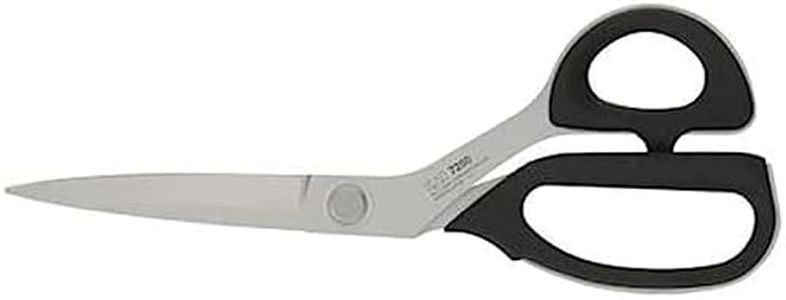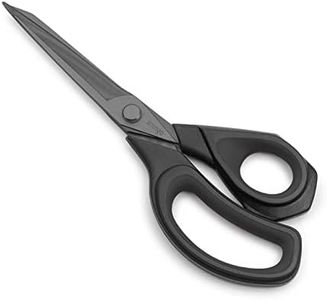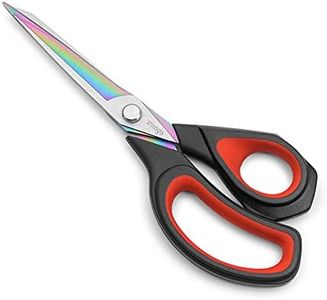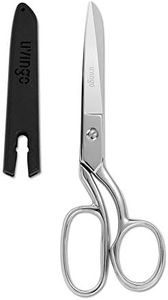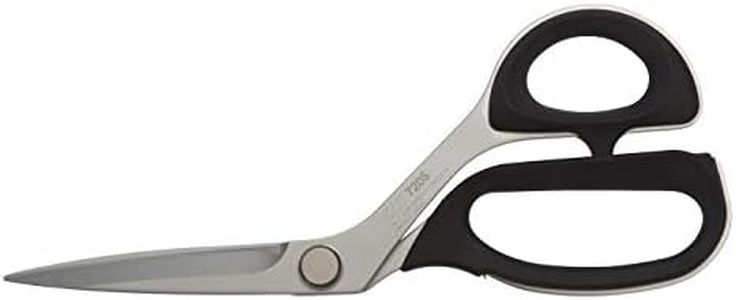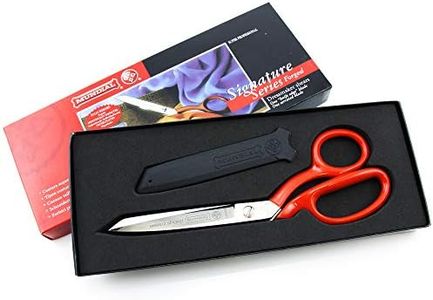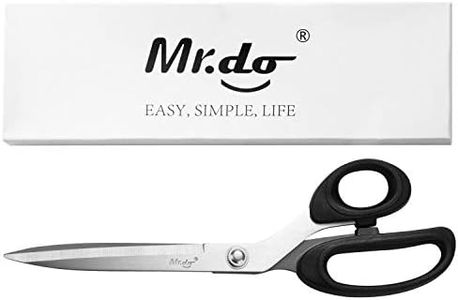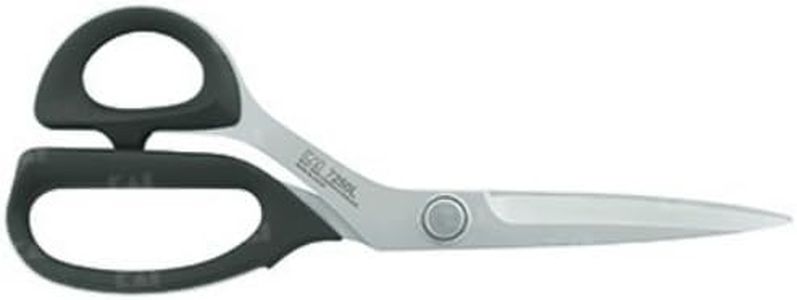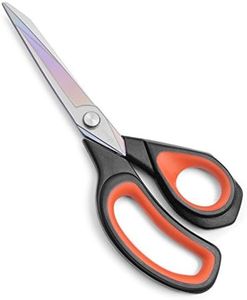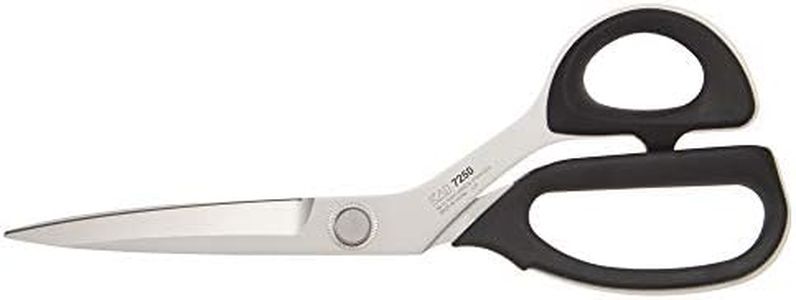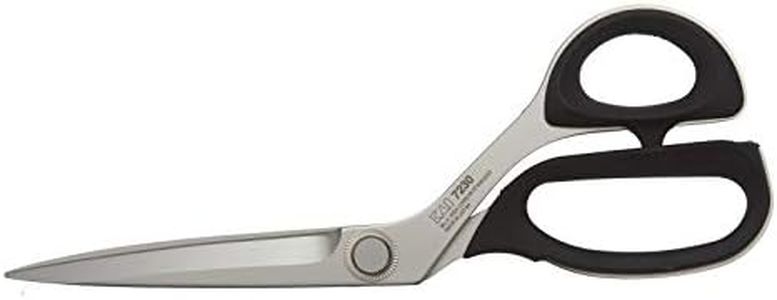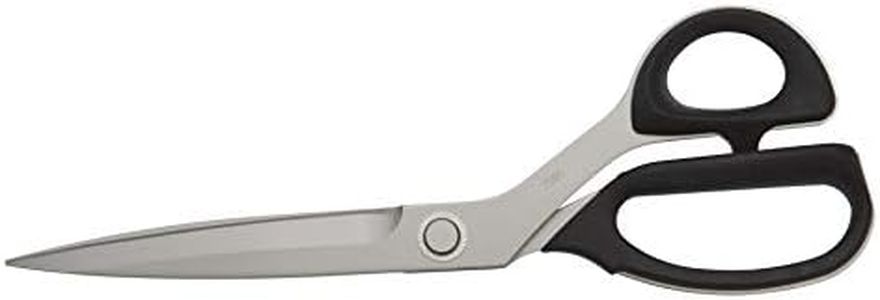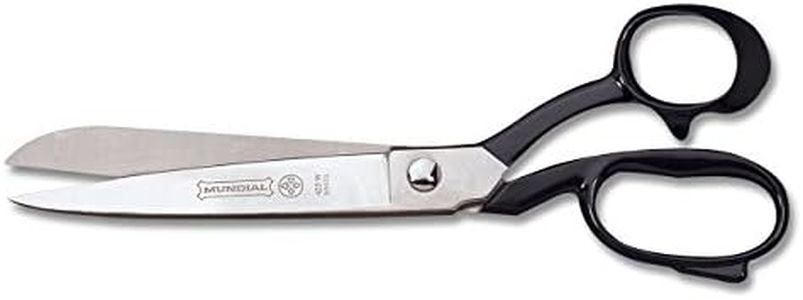We Use CookiesWe use cookies to enhance the security, performance,
functionality and for analytical and promotional activities. By continuing to browse this site you
are agreeing to our privacy policy
10 Best Fabric Scissors
From leading brands and best sellers available on the web.Buying Guide for the Best Fabric Scissors
Choosing the right fabric scissors is an important step for anyone who enjoys sewing, crafting, or quilting. Having scissors designed specifically for cutting fabric ensures clean, accurate cuts and helps preserve the quality of your fabric, as well as the longevity of your scissors. It's important to think about comfort, precision, and the types of projects you'll be tackling. Understanding the key features of fabric scissors will help you select a pair that matches your needs and makes your creative process smoother and more enjoyable.Blade MaterialThe blade material determines how sharp, durable, and rust-resistant your fabric scissors are. Most commonly, scissors come in stainless steel or high-carbon steel. Stainless steel is popular because it resists rust and stays sharp for a good while. High-carbon steel tends to hold its edge even longer, but may need more care to avoid rust. Choose based on how often you use the scissors and how much maintenance you're willing to do; for casual use, stainless steel is sufficient, while frequent or heavy users might benefit from high-carbon steel blades.
Blade LengthBlade length affects how easily you can make long, smooth cuts or manage detailed work. Short blades (4-6 inches) are ideal for precision cutting and intricate patterns, while longer blades (7-10 inches) make it easier to cut long, straight lines in fabric. Your projects should determine this: go for shorter blades if you work on small crafts or detailed sewing and opt for longer blades if you're often cutting out large fabric pieces for garments or quilts.
Handle ComfortHandle comfort is crucial because cutting fabric can take time and may cause hand fatigue. Look for ergonomic handles or ones with soft grips if you have sensitive hands or plan to cut a lot. Handles come in different shapes and materials, with some designed for either left- or right-handed users. Test the grip or choose a model recommended for your hand orientation, and prioritize ease of use over appearance.
WeightThe overall weight of the scissors can affect your comfort and control, especially during longer projects. Heavier scissors provide more stability and can help with cutting thicker fabrics, but may cause fatigue over time. Lightweight scissors are easier to handle for longer sessions or finer tasks, but may not be as robust for tough materials. Think about how long you'll be using them in one sitting and the types of fabrics you'll cut most often when deciding on weight.
Type of Scissors (Dressmaker, Pinking, Embroidery, etc.)There are several types of fabric scissors, each made for specific tasks: dressmaker's shears are general-purpose with a bent handle for flat cutting, pinking shears create a zigzag edge to reduce fraying, and embroidery scissors are small for precision snipping. Choose a type that matches your main sewing activities. For general sewing, dressmaker's shears are a solid choice, while specialized projects may require pinking or embroidery scissors as well.
Adjustable Tension ScrewSome fabric scissors come with an adjustable tension screw, allowing you to set the resistance of the blades. This helps keep the scissors cutting smoothly as they age, and lets you customize the feel for your hand strength and fabric types. If you cut a variety of fabrics or want scissors to last a long time, this feature can be valuable. If you're new or only occasionally use the scissors, a fixed-tension pair will usually suffice.
